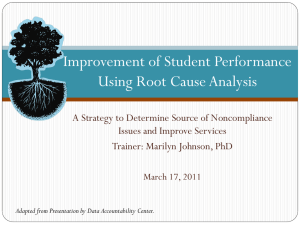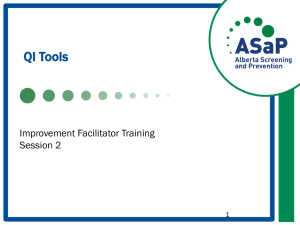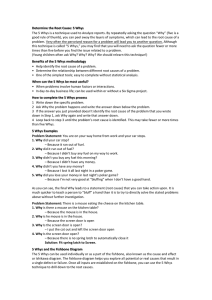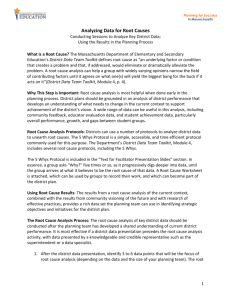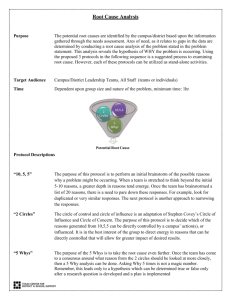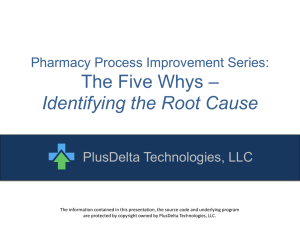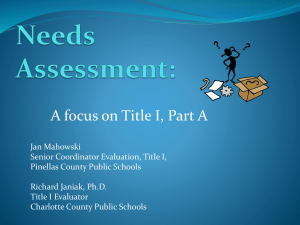General Technique Information
advertisement
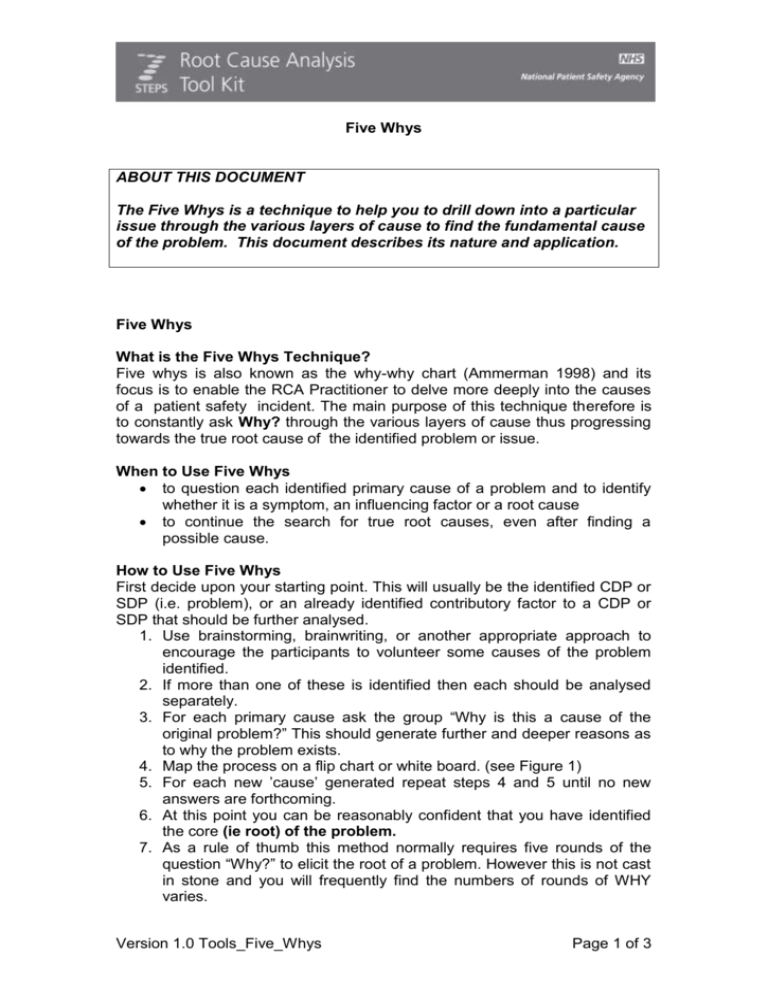
Five Whys ABOUT THIS DOCUMENT The Five Whys is a technique to help you to drill down into a particular issue through the various layers of cause to find the fundamental cause of the problem. This document describes its nature and application. Five Whys What is the Five Whys Technique? Five whys is also known as the why-why chart (Ammerman 1998) and its focus is to enable the RCA Practitioner to delve more deeply into the causes of a patient safety incident. The main purpose of this technique therefore is to constantly ask Why? through the various layers of cause thus progressing towards the true root cause of the identified problem or issue. When to Use Five Whys to question each identified primary cause of a problem and to identify whether it is a symptom, an influencing factor or a root cause to continue the search for true root causes, even after finding a possible cause. How to Use Five Whys First decide upon your starting point. This will usually be the identified CDP or SDP (i.e. problem), or an already identified contributory factor to a CDP or SDP that should be further analysed. 1. Use brainstorming, brainwriting, or another appropriate approach to encourage the participants to volunteer some causes of the problem identified. 2. If more than one of these is identified then each should be analysed separately. 3. For each primary cause ask the group “Why is this a cause of the original problem?” This should generate further and deeper reasons as to why the problem exists. 4. Map the process on a flip chart or white board. (see Figure 1) 5. For each new ’cause’ generated repeat steps 4 and 5 until no new answers are forthcoming. 6. At this point you can be reasonably confident that you have identified the core (ie root) of the problem. 7. As a rule of thumb this method normally requires five rounds of the question “Why?” to elicit the root of a problem. However this is not cast in stone and you will frequently find the numbers of rounds of WHY varies. Version 1.0 Tools_Five_Whys Page 1 of 3 (see Figure 1). Positives Attributes of the Five Whys Technique it allows the individual or group to drill down through the causal pathway specifically it is a simple and effective tool that works well in groups and when undertaken by an individual. Negative Attributes of the Five Whys Technique causal analysis could be constrained by mind set and lack of breadth and depth of thought why can be asked as frequently as possible to get to the real cause of the problem, therefore asking why 5 times may not be appropriate a specific and contained issue to drill down on is important if this technique is to work. The Five Whys Template and Example A patient had the wrong leg amputated 1. Why Patient gave consent for amputation the night before the proposed surgery to Registrar (who was not going to undertake procedure). 2. Why Amputation site marked with a biro (wrong leg). 3. Why Registrar unaware of hospital policy on amputation sites being marked with a skin pencil and with bodily part being fully visible to Doctor. 4. Why the department had no induction procedures for new medical staff working in the department. 5. Why because “we’ve never been asked to”. Five Whys - Figure 1 Please note that there is a template for the Five Whys tool available for you to use in the Template section of the Resource Centre. References Adams, S. et al, (2002) Long Version of the CRU/ALARM Protocol: Successful Systems Event Analysis (In print, 2002) Version 1.0 Tools_Five_Whys Page 2 of 3 Ammerman, M., The Root Cause Analysis Handbook: A Simplified Approach to Identifying, Correcting and Reporting Workplace Errors (Quality Resources, New York, 1998) Dineen, M., Six Steps to Root Cause Analysis 18 September Consequence (Oxford, 2002, ISBN 0-9544328-0-0) Joint Commission on Accreditation of Healthcare Organisations, Root cause analysis in healthcare: Tools and techniques (2000) Warren, I. Events and Causal Factor Charting for Healthcare. Conference (Presentation at The St Paul Conference on Root Cause Analysis, London, 3 October 2001) Version 1.0 Tools_Five_Whys Page 3 of 3
